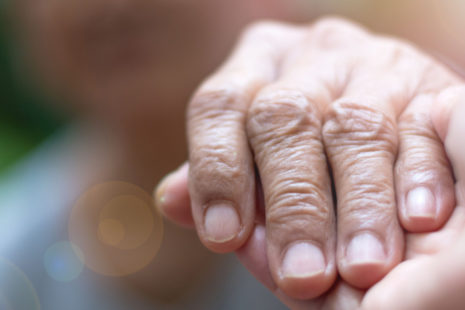A large number of people experience chronic illnesses or injuries and need some sort of assistance with activities of daily living (ADLs) and medical care as they age. However, many aging adults decide to age at home. Aging in place allows you to stay within familiar surroundings and keep your independence for as long as possible.
You may need daily assistance with ADLs or medications. But if the idea of leaving your home and moving to an assisted living facility or nursing home doesn’t appeal to you, you may consider home health care services.
You can purchase home health care from an agency or an individual provider. Make sure to discuss your needs with your family and contact your local Area Agency on Aging (AAA) to learn more about home health care options.
What Is Home Health Care?
Home health care includes medical care you receive in your home for an illness or injury. It typically includes:
- Skilled nursing
- Occupational therapy
- Physical therapy
- Speech therapy
What is Hospice Care?
Hospice care is a special kind of care that focuses on terminally ill people nearing the end of life. Hospice care covers a range of services, and a team of health care professionals typically provides it. It focuses on providing compassionate care and comfort or palliative care, not on curing a disease.
Hospice prevents unnecessary hospitalizations and aims to maximize the patient’s comfort by reducing pain and attending to other physical needs. Moreover, hospice care addresses psychological, social, and spiritual needs for patients, caregivers, and families. It relieves caregiver burden and stress and provides counseling for patients and their families through the end-of-life process.
As part of hospice services, the patients receive palliative care, which aims to provide comfort and reduce pain and other symptoms as much as possible.
Which is Better, Home Health Care, or Hospice?
Two of the most common home health care services are home health and hospice. Medicare and most private insurance companies cover both services.
However, home health care and hospice are intended for groups of people with different needs. While home health care services are ordered by a doctor and focus on helping the person recover or rehabilitate from the disease or injury, the goal of hospice care is to provide the highest quality of life possible for the person in the latest stages of the advanced disease.
Hospice home care is provided by a team of professionals trained to provide clinical, emotional, social, and spiritual care and support for a patient nearing the end of life and their family.
Who Qualifies for Home Health Care?
To qualify for home health care, you need to meet specific criteria. In the first place, people who receive home health care need to be considered homebound.
Being homebound means that your illness or injury prevents you from leaving home unassisted.
Your doctor must also confirm that you are housebound and need home health care. If you have to leave the hospital after an illness or injury but have not healed completely (and need to continue recovery at home), you are considered homebound. In this case, you can qualify for home health care. Your doctor needs to present the plan of home health care that includes the services or equipment you may need.
In addition, your home health care services need to be provided by a Medicare-approved home health agency.
Is Hospice Considered Home Health Care?
Although hospice can be centered in hospitals, inpatient hospice centers, or extended-care facilities, many people in the last phases of the life-limiting disease usually receive hospice care in their home. Hospice allows the patient to live independently, receiving care in their home or place of choice.
Some hospice agencies offer both hospice in-home and in an inpatient facility. Depending on individual needs, a patient may experience the following hospice care levels (or some of them):
- Routine hospice care at home
- Continuous hospice care
- Inpatient hospice care
- Respite care
Each level of hospice meets specific needs. A Medicare-certified provider must be able to provide each of these four levels of care.
The hospice home care delivers personalized care in familiar settings of the patient’s home. However, it also provides respite care – a short-term stay at a qualified hospice facility that allows a caregiver or family members to take a break, rest, and take care of other things. Respite care is covered by Medicare and can last up to five days at a time.
Hospice care also includes grief care for family members following the loss of a loved one.
If you or your loved one are receiving in-home hospice care, you will receive regular visits by the hospice nurses. They are also available by phone 24/7.
While home hospice programs include physicians, nurses, and other professionals, the primary caregiver is typically responsible for around-the-clock supervision of the patient, staying with the patient most of the time.
Who Qualifies for Hospice?
To qualify for hospice, a patient must decide to end curative treatment for their illness. Such a decision is typically made in collaboration with the patient’s family and doctor. The doctor must also confirm a life expectancy of six months or less.
A person who enters into hospice care usually needs to pick someone as their primary caregiver (a family member or close friend). The primary caregiver makes the decisions for the patient and works with the hospice team to create a care plan based on the patient’s unique needs.
What Does a Hospice Home Health Aide Do?
Hospice home health aides carry out a care plan with other professionals to ensure that patients receive personalized one-on-one care to enjoy the quality of life nearing its end. While hospice aids work in collaboration with doctors, nurses, bereavement specialists, etc., they also work independently, providing regular visits, and bedside care for their patients.
Hospice health aides typically assist with activities of daily living (ADLs) such as:
- Personal hygiene (bathing, dressing, hair care, oral care, etc.)
- Feeding
- Cooking
- Shopping
They also perform light housekeeping duties. However, hospice aides provide much more than medical attention and housekeeping. They lend a listening ear and provide compassion and company during bedside visits. In short, hospice aides ensure patients are comfortable, making a difference in their patients’ lives at the end of life.
To become a hospice aide, you need to meet specific requirements:
- Must have a Home Health Aide Certificate
- Must have at least one year of experience in direct patient care
- Must be able to travel
- Must be comfortable dealing with end-of-life issues and grieving
How Much Does In-Home Hospice Care Usually Cost?
Hospice care costs may vary depending on the level of care required. However, the average price is usually around $150 for in-home hospice care. The cost of general inpatient care per day is up to $500 daily and can run up to $10,000 per month.
However, Medicare, Medicaid, and most private insurance companies usually pay the majority of hospice services.
Who Pays for Hospice at Home?
Hospice patients typically have no hospice expenses as Medicare covers 100% of in-home hospice care. Also, most hospices work with Medicaid, the private insurers, and the Veterans Administration to cover for the patient’s end-of-life care.
Patients who don’t have insurance can still receive hospice care.
What Does Hospice Cover at Home?
In-home hospice provides a range of medical care and support services for terminally ill patients and their families, typically including:
- Medical and nursing services
- Medication management – drugs for pain relief and symptom management
- Social services
- Medical equipment and related services
- Spiritual and grief counseling (typically not covered by Medicare)
- Respite care
Does Hospice Take Your Assets?
No. Medicare, the federal health insurance program for people aged 65 or older and persons with disabilities or serious illnesses, covers hospice care.
You may also be covered under Medicaid federal and state government program that helps with medical costs for people with low income and limited resources.
The Hospice Medicare Benefit covers the following:
- The medications and equipment related to the terminal illness
- Interdisciplinary team services (doctors, nurses, hospice aides, social workers, volunteers, physical therapists, occupational therapists, speech therapists, music and massage therapists)
- Spiritual care providers and bereavement counselors
Medicare does not cover medical services that are unrelated to the terminal disease and day-to-day needs.
How Long Does the Average Hospice Patient Live?
Studies show that most patients enroll in hospice very close to the end of life – almost half of the hospice patients die within three weeks.
Medicare criteria for hospice care require patients to have a life expectancy of six months or less, which needs to be certified by their physician. Nevertheless, about 15 percent of patients survive six months or longer.






